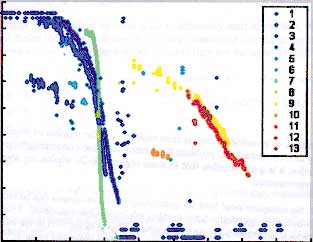Animal Abundance from Acoustic Data
Some species of animal are hard to see, because for example:
- They are small or well camouflaged.
- They are not always available to be seen if they spend time underground or underwater.
However, many species produce distinctive sounds which can be detected by acoustic devices. Passive acoustic surveys have some advantages over visual surveys but they suffer from problems that do not affect visual surveys, for example species identification or a vocalization rate is often required in order to estimate.
CREEM has been involved in two long-term studies of cetaceans using passive acoustic monitoring methods.
Density estimation for cetaceans from passive acoustic fixed sensors (DECAF)
DECAF was a 3.5 year (2007-2011) international research project, the key objective of which was to develop and implement statistical methods for estimating cetacean (whale and dolphin) population density by using underwater hydrophones to listen for the sounds they make.The research was undertaken by an international team of leading statisticians, acousticians, cetacean survey specialists and biologists, led by members CREEM.
Static Acoustic Monitoring of the Baltic Sea Harbour Porpoise (SAMBAH)
SAMBAH is an inter-national project involving all EU countries around the Baltic Sea, with the aim of estimating harbour porpoise population densities and total abundance. Porpoise click detectors were deployed throughout the Baltic Sea between May 2011 and May 2013. Members of CREEM were involved with developing the survey design and analysis methods, and then analysing the data collected.

